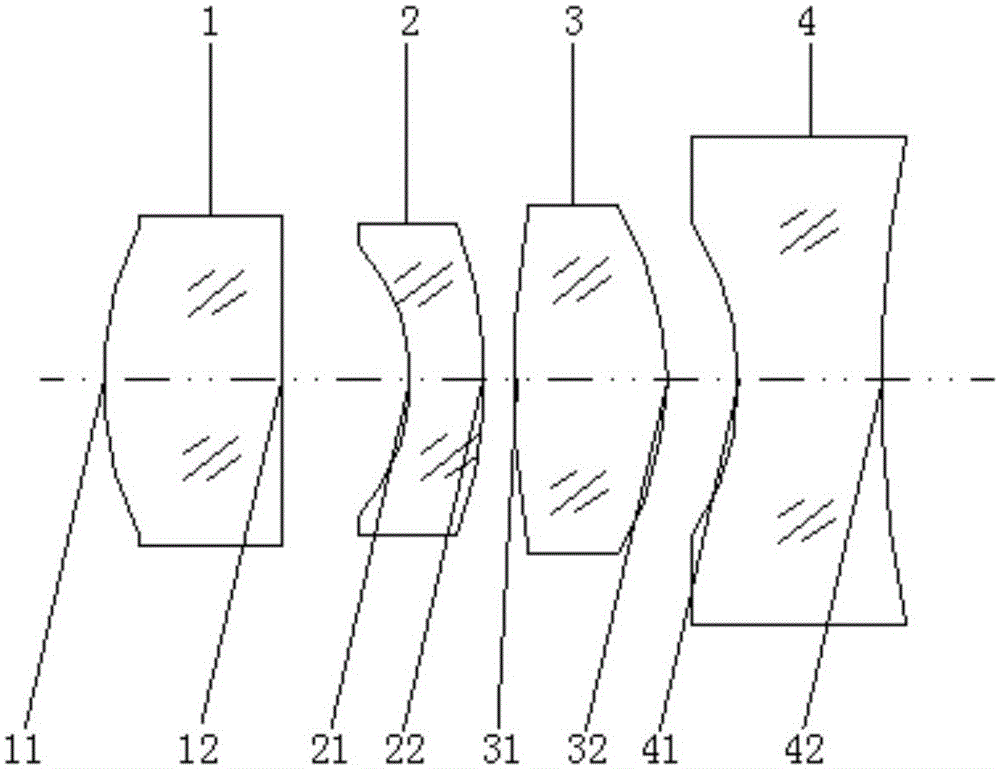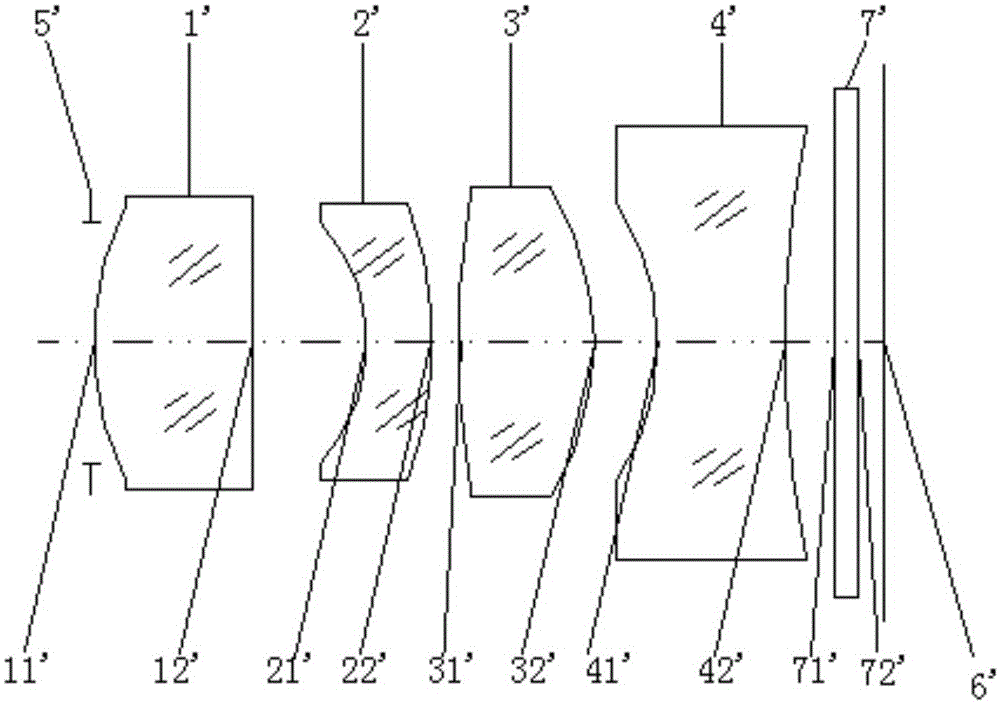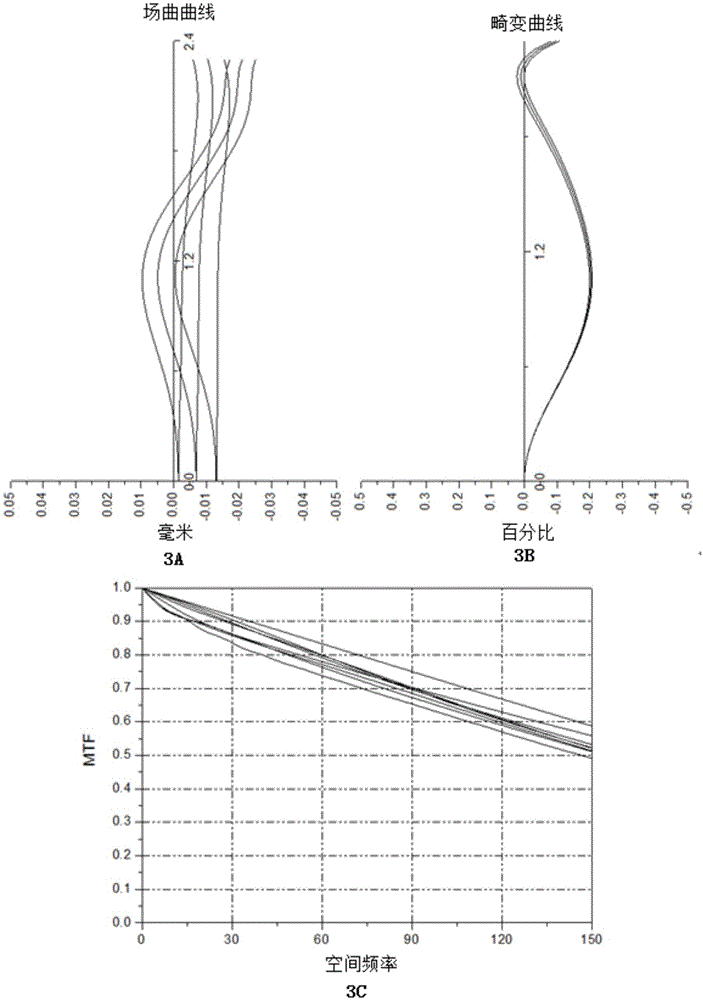Imaging lens, iris imaging module and binocular iris recognition device
An imaging lens and imaging module technology, applied in the field of biometrics, can solve the problems of complex operation, large volume, and high cost, and achieve the effect of good imaging quality, high imaging quality, and simple structure
- Summary
- Abstract
- Description
- Claims
- Application Information
AI Technical Summary
Problems solved by technology
Method used
Image
Examples
Embodiment 1
[0054] This embodiment is an imaging lens for binocular iris recognition, such as figure 2 As shown, it is composed of four lens groups, a diaphragm 5' and a flat filter 7'. An image sensor 6' is arranged behind the imaging lens. Along the optical axis, the order is: diaphragm 5', first lens 1' It is a concave-convex lens, its front surface 11' is convex, its rear surface 12' is concave, and has positive power; the second lens 2' is a concave-convex lens, its front surface 21' is concave, and its rear surface 22' is convex. It has negative refractive power; the third lens 3' is a biconvex lens, its front surface 31' is convex, and its rear surface 32' is convex, with positive refractive power; the fourth lens 4' is a biconcave lens, its front surface 41' is a concave surface, and the rear surface 42' is a concave surface with negative power; the plane filter 7' is located between the fourth lens and the imaging surface, and the imaging surface is the image sensor surface, usi...
Embodiment 2
[0062] This embodiment is an imaging lens for binocular iris recognition, such as Figure 4 As shown, it consists of four lens groups and a diaphragm 5", and an image sensor 6" is arranged at the rear of the imaging lens. The surface 12" is a concave surface with positive refractive power; the stop is 5", the second lens 2" is a concave-convex lens, the front surface 21" is concave, and the rear surface 22" is convex and has negative refractive power; Three lens 3 " is biconvex lens, and its front surface 31 " is convex, and back surface 32 " is convex, has positive optical power; The fourth lens 4 " is biconcave lens, and its front surface 41 " is concave, and back surface 42 "is a concave surface with negative refractive power; the diaphragm 5" is located between the first lens and the second lens, and the imaging surface is the image sensor surface, using a CCD or Cmos sensor. The four lenses are all even-order aspherical lenses made of plastic. The imaging wavelength of ...
PUM
 Login to View More
Login to View More Abstract
Description
Claims
Application Information
 Login to View More
Login to View More - R&D
- Intellectual Property
- Life Sciences
- Materials
- Tech Scout
- Unparalleled Data Quality
- Higher Quality Content
- 60% Fewer Hallucinations
Browse by: Latest US Patents, China's latest patents, Technical Efficacy Thesaurus, Application Domain, Technology Topic, Popular Technical Reports.
© 2025 PatSnap. All rights reserved.Legal|Privacy policy|Modern Slavery Act Transparency Statement|Sitemap|About US| Contact US: help@patsnap.com



